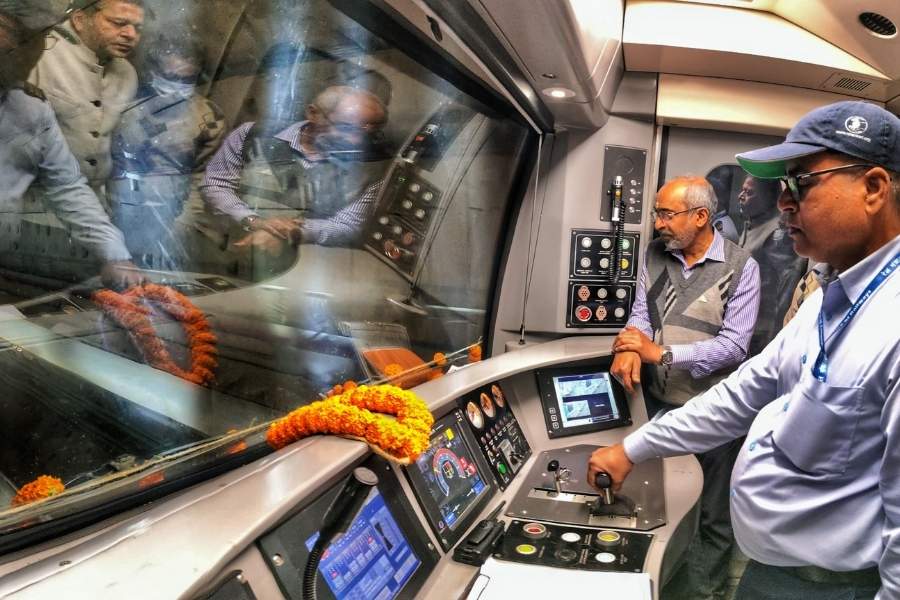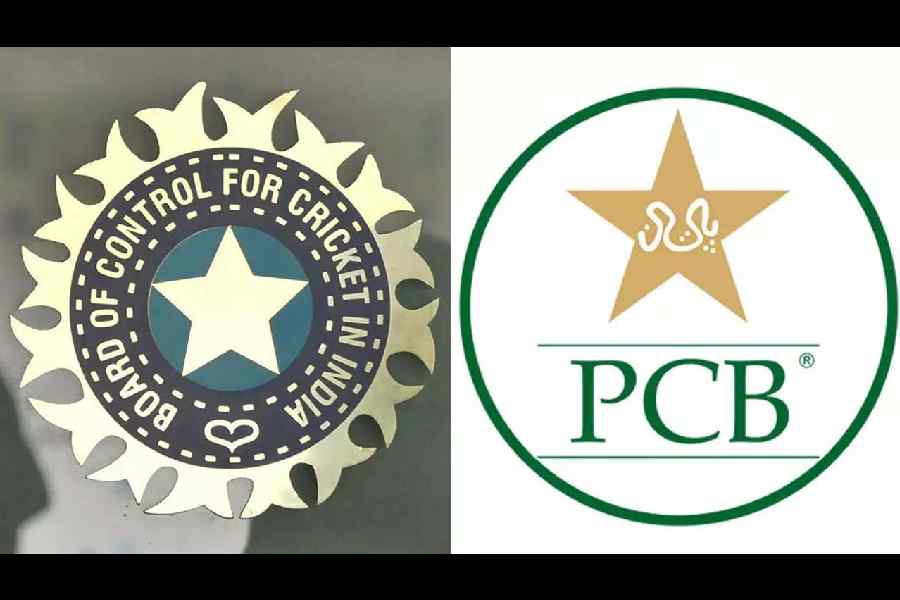 Wednesday, 22 January 2025
Wednesday, 22 January 2025
 Wednesday, 22 January 2025
Wednesday, 22 January 2025
Medicine is a hallowed and fiercely competitive profession in India. National Medical Commission data from 2022 show that there are 13,08,009 registered doctors countrywide. Is that enough for a country of 1.44 billion people?
In India, the road to a medical college today is defined by the National Eligibility cum Entrance Test (NEET), a notoriously demanding standardised academic exam, essential for admission into undergraduate medical and dental programmes nationwide. This year, 2,333,297 students appeared for the exam, already mired in legalities over questionable evaluation processes. Last year, 20,36,316 students appeared and 11,45,976 got selected.
Across the globe, navigating the path to medical school is a varied experience with countries employing a diverse selection criteria which often extend beyond academic knowledge. From the rigorous Gaokao exam in China to the weighted lottery system of the Netherlands, here is a look into the diverse challenges faced by aspiring medical students across the world.
Russia
Russian students must navigate a rigorous process to gain admission to medical school via the Unified State Exam (EGE). The EGE, a comprehensive and standardised test, serves as both a high school graduation requirement and requirement for entrance into any university or professional course. Key subjects for prospective medical students include Biology, Chemistry, and the Russian Language. Administered annually in late spring or early summer, the EGE assesses students' knowledge and problem-solving abilities through a combination of multiple-choice, short-answer, and essay questions. Following the release of their EGE scores, students apply to medical universities through a centralised system. Based on the estimates from the World Health Organisation, there are around 581,862 working doctors in Russia as of 2021.
United Kingdom
In the UK, gaining admission to medical school is a highly competitive process that begins with strong Advance Level (A-level) qualification results in science subjects, particularly Biology and Chemistry. Prospective students must also perform well on entrance exams such as the University Clinical Aptitude Test (UCAT) or the BioMedical Admissions Test (BMAT), which assess cognitive abilities, scientific knowledge, and critical thinking skills. The application process is managed through UCAS (Universities and Colleges Admissions Service), where students submit their exam scores, academic records, personal statements and references. According to The Medic Portal, 24,150 students applied for medicine through the UCAS in 2024. Many medical schools also conduct interviews to evaluate applicants' suitability for a medical career. As of early 2024, there are approximately 296,182 licensed doctors in the UK, according to data from the General Medical Council (GMC) and the Office for National Statistics (ONS).
China
In China, aspiring medical students take the Nationwide Unified Examination for Admissions to General Universities and Colleges, commonly abbreviated as the Gaokao exam. It is the largest academic test in the world. A record 13.4 million students sat for Gaokao in 2024. The exam, held annually in June by the ministry of education, is a high-stakes standardised test that assesses students' knowledge and abilities in core subjects such as Chinese, Mathematics and a foreign language, typically English, along with science subjects like Biology and Chemistry. Students spend years preparing for Gaokao, often attending intensive cram schools and tutoring sessions. The exam's results are pivotal, determining eligibility and placement in universities across the country. High scores are essential for admission to top-tier medical schools, as these institutions have stringent cutoff marks due to the limited number of seats and high demand. In 2022, according to China's National Health Commission the number of working doctors in the country had reached 4.2 million by the end of 2021.
United States
In the United States, gaining admission to medical school is a multi-step process that begins with completing a four-year undergraduate degree, often with a pre-med focus. Prospective medical students must then take the Medical College Admission Test (MCAT), a standardised exam that assesses problem-solving, critical thinking, and knowledge of natural, behavioural, and social science concepts. The MCAT is a critical component of the application, with scores playing a significant role in admissions decisions. Students apply to medical schools through the American Medical College Application Service (AMCAS), submitting transcripts, MCAT scores, letters of recommendation, and personal statements. In 2024, approximately 55,188 applicants availed the AMCAS for entry into US medical schools. According to the latest data from the American Association of Medical Colleges (AAMC), the number of working physicians in the US is around 989,320 as of 2022.
France
In France, students confront a highly challenging process in order to gain entry into medical school, beginning with the completion of their secondary education and obtaining the Baccalauréat, often with a focus on science subjects. They then enrol in the highly competitive first year of health studies known as PASS (Parcours d'Accès Spécifique Santé) or L.AS (Licence avec Option Accès Santé). In PASS, at the end of one year, students must pass a highly selective and demanding competitive exam, which tests their knowledge in subjects such as Biology, Chemistry, Physics, and Anatomy and determines their eligibility to continue in medical studies. The L.AS path allows students to enrol in a standard bachelor's degree (Licence) program in various fields (e.g., Biology, Chemistry, Law) while taking additional health-related courses. High performers can apply to transition into the second year of medical school. According to data from the World Health Organisation, there are 225,876 doctors working in France as of 2021.
Germany
In Germany, gaining admission to medical school requires excellent academic performance in secondary education, culminating in the Abitur, the German high school diploma. Prospective medical students must apply through the Stiftung für Hochschulzulassung (SfH), a centralised service for university admissions. While there is no specific entrance exam, admission is largely based on the Abitur grades, particularly in subjects like Biology, Chemistry, and Physics. Additionally, prospective medical students often take the TMS (Test für Medizinische Studiengänge), an optional aptitude test that assesses cognitive abilities and knowledge relevant to medical studies, to improve their chances of getting into medical school. According to data from the World Health Organisation, there are 10,3427 medical graduates and 375,338 practising doctors in Germany as of 2021.
Italy
In Italy, students holding a highschool diploma or an equivalent can appear for the International Medical Admissions Test (IMAT). The IMAT, conducted in English, assesses applicants' scientific knowledge, logical reasoning, and critical thinking skills across sections covering Biology, Chemistry, Physics, Mathematics, and general knowledge. Administered by the Italian Ministry of Education, Universities and Research (MIUR) in collaboration with Cambridge Assessment Admissions Testing, the IMAT is mandatory for entry into Italy's prestigious English-taught medical programmes. The results of the IMAT, combined with students’ secondary school performance, determine eligibility for admission. According to data from the World Health Organisation, there are 244,663 doctors working in Italy as of 2021.
Denmark
In Denmark, gaining admission to medical school is a process primarily based on academic performance in secondary education. Students must achieve high grades in their upper secondary school diploma (Studentereksamen) with a strong emphasis on science subjects like Biology, Chemistry, and Mathematics. Admission is managed through the national application system, Coordinated Admission (KOT), and universities may use a combination of grades and motivational essays or interviews for selection. Some medical schools also consider the Danish version of the baccalaureate exam scores. According to data from the World Health Organisation, there are 24,939 working doctors in Denmark as of 2021.
Netherlands
In the Netherlands, the selection process for medical students is centred around their high school grades, especially in science subjects. Instead of a national entrance exam, Dutch medical schools use a weighted lottery system or decentralised selection procedures. The weighted lottery system allocates university places based on a combination of high school grades and a lottery, giving higher chances to students with better academic performance (but ensuring all applicants meeting the minimum requirements to have a chance). The process was abolished in 2017 with universities moving towards a holistic decentralised selection process, which often involves multiple mini-interviews (MMIs), assessments of cognitive skills, and evaluations of motivation and suitability for a medical career, besides academics. However, the lottery system is set to be reintroduced in order to increase diversity within Dutch universities. According to data from the World Health Organisation, there are 71,300 practising doctors in the Netherlands as of 2021.
Japan
Aspiring Japanese medical students face a thorny two-tiered admission process. Common Test for University Admissions, a new university entrance examination system was introduced in 2021 to replace the National Center Test for University Admissions, in order to assess a broader range of skills and knowledge. The test covers a range of subjects including Japanese, Mathematics, Science, Social Studies, and foreign languages. Following success in this national exam, students face university-specific entrance exams, which further evaluate their knowledge in the sciences and critical thinking skills. These exams, administered by each medical school, are highly competitive and include both written tests and interviews, and evaluate deeper understanding and aptitude for medical studies. According to data from the World Health Organisation, there are 89,721 medical graduates and 325,239 practising doctors in Japan as of 2021.
Ukraine
In Ukraine, students seeking admission to medical school must first complete their secondary education with a strong emphasis on science subjects. The primary entrance requirement is passing the External Independent Testing (EIT) exam, which serves as the university entrance exam in the country. The exam includes mandatory tests in Ukrainian Language, Literature, and History, Biology, Chemistry, and sometimes Physics. High scores in these subjects are crucial for admission. Students apply through a centralised system, and their EIT scores are combined with their secondary school grades to determine eligibility. Some universities may also conduct additional entrance exams or interviews. The last available estimates from WHO show that there were about 159,238 doctors in Ukraine in 2013. Around 15,000 Indian medical students were studying in Ukraine when the Russian invasion began in February 2021.







